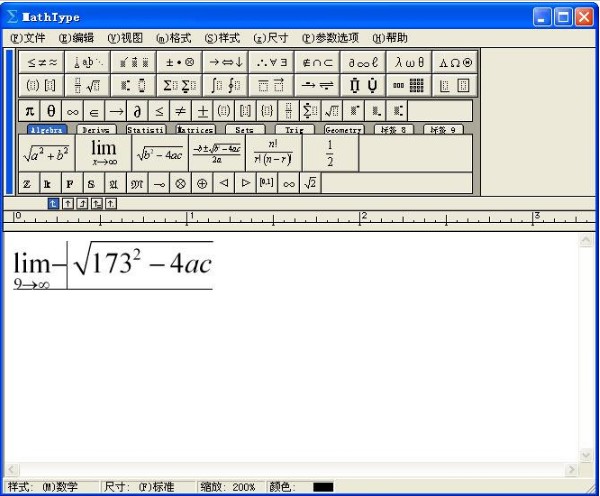

I then go through the process of installing LAMP on the server and getting WordPress configured and recovering my site from my backup. Now, I ssh into my new server and I can login with my SSH keys from my various workstations and it works.

In the node tab, under Interfaces, I could statically set my IP address, which I did, and then I clicked deploy, and from the pull down said 16.04 and it was off. I deployed, which I have to say, is a huge improvement over 1.9. After 10 minutes, it was commissioned and ready for deployment. I then clicked on my new node, and commissioned it.
#MATHTYPE 6.9B KEY UPDATE#
I then ran maas maas domain update name= and verified that it was updated with maas maas domains read and in the MAAS WebUI, it updated it as well. I ended up changing it from the MAAS CLI by ssh’ing into my MAAS server and running the following command to login: In 1.9, it was as easy as clicking the domain name on the Nodes tab, but in 2.0, not so much. That would be helpful to tell a user how, but I’m not going to go there. I changed its name, but realized it was not using my DNS name, but instead the MAAS default of “maas.” According to Canonical’s documentation on MAAS, you can change this from the WebUI. I powered it up and boom! MAAS found it, and enlisted the node. I built my webserver as a KVM, and told it to PXE boot and attach it to the server network bridge on my KVM host. Under the Take Action button, I configured DHCP for this network and was ready to go. I then went back to the Network tab and clicked the VLAN for each of my fabrics. I then clicked my other subnet and did the same thing there. I set a dynamic reservation for my internal network starting at. I clicked on the Network tab and clicked on the subnet I wanted to have DHCP. I then copied all my SSH keys to my account so that I can access my new nodes with my SSH key, and I then went to the Images tab to make sure it was downloading the 16.04 image, and did some minor settings to make sure it seen all my networks and put in my DNS forwarders. I click on my account in the upper right corner and went to Account, and copied my API key to a file called maas.key in my home directory on MAAS so that when I need to use the CLI, I can just cat maas.key instead of having to type the whole damn thing in. I then logged in to maas by opening Firefox and browsing to my maas servers IP address and logging in. After it was complete, I ran sudo maas createadmin to create the admin account.
#MATHTYPE 6.9B KEY INSTALL#
I ran sudo apt install maas and was off and running. I installed a clean 16.04 LTS server, added OpenSSH and configured the interfaces for static addresses and ran update/upgrade and now was ready to install MAAS.

I build a KVM with 2GB of RAM and 2 processors and 60GB of storage and added 2 NIC’s, one for each of my networks, one for my servers and external network, and one for my internal guest network. I also modified my NIC interfaces to bridges. I installed Ubuntu 16.04, selected OpenSSH server and Virtual Machine Host from the TaskSel and then after it was installed, ran sudo apt update & sudo apt upgrade, rebooted, and then ran sudo apt install ovmf qemu and modified my /etc/libvirt/nf to point to where ovmf was (basically just removed the comments from the file for those settings) and than ran systemctl restart libvirt-bin and was ready to go. Sounds easy enough? Not so much.īuilding the KVM host was easy.
#MATHTYPE 6.9B KEY UPGRADE#
It became a hassle to keep it up and running on older hardware so I upgraded it to KVM and Ubuntu 16.04 and I decided that I would also upgrade my VM’s from 14.04 LTS to 16.04 LTS since I had the downtime.Īnyways, I decided that I was going to use MAAS, or Canonical’s Metal-As-A-Service to provision my KVM’s and also get rid of my aging DHCP/DNS server that was running 12.04 and just move everything to MAAS. I was running ESXi 6 on one of my hosts that ran Ubuntu VM’s for this site, and my email server, and a couple other servers that I use to do my job. I decided during this time as well to revisit my DNS and Virtual Host machines. I updated my network topology last night to accommodate for guest access and to separate my personal network from my work network to keep my video game consoles and my cell phones off of my external facing network and firewall them up better for more security. Hello everyone! Been a while since I wrote a blog entry.


 0 kommentar(er)
0 kommentar(er)
